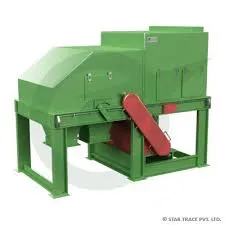

नोभ . 27, 2024 09:54 Back to list
Eddy Current Non-Ferrous Separator A Revolution in Recycling
In recent years, the demand for sustainable waste management solutions has surged, driven by the urgent need to conserve resources and reduce environmental impact. Among the innovative technologies emerging in this field, the Eddy Current Non-Ferrous Separator stands out as a key player in the recycling industry. This cutting-edge equipment specifically targets non-ferrous metals, such as aluminum, copper, and zinc, making it an invaluable asset for recycling plants and waste management facilities.
Understanding Eddy Current Separation
Eddy current separation is based on electromagnetic induction principles. When a non-ferrous metal is exposed to a changing magnetic field, it generates Eddy currents within the metal itself. These currents produce their own magnetic field, which interacts with the external magnetic field in a way that causes the metal to be repelled. Thus, the non-ferrous metals are effectively separated from other materials, such as plastics, glass, and ferrous metals.
The process begins with material being fed onto a conveyor belt. As it moves towards the Eddy current separator, a rotating drum containing magnets creates a rapidly changing magnetic field. Non-ferrous metals are propelled away from the rest of the material due to the repulsion caused by the Eddy currents. This method not only efficiently separates metals from waste but also enhances the purity and quality of the recovered materials.
Benefits of Eddy Current Non-Ferrous Separators
1. Efficiency and Accuracy One of the standout features of Eddy current separators is their high operational efficiency. They are capable of processing large volumes of materials at high speeds, making them ideal for large-scale recycling operations. Furthermore, the separation is highly accurate, ensuring that even small particles of non-ferrous metals are recovered.
2. Cost-Effective The initial investment in an Eddy current separator can be significant, but the long-term savings are substantial. By recovering valuable non-ferrous metals, facilities can significantly bolster their profitability. Additionally, the reduced need for manual sorting decreases labor costs and minimizes the potential for human error.

3. Environmentally Friendly By enhancing metal recovery rates, Eddy current separators play a critical role in promoting sustainability. They help close the loop on the recycling process, ensuring that valuable resources are reused rather than sent to landfills. This not only conserves natural resources but also reduces the energy consumption associated with metal extraction and processing.
4. Versatile Applications Eddy current separators are not limited to municipal recycling facilities; they are also utilized in various industries, including automotive, electronics, and construction. They can efficiently process mixed waste streams, making them versatile tools for numerous applications.
5. Minimal Maintenance Eddy current separators are designed for durability and low maintenance. Their robust construction ensures long-lasting performance, which is crucial for facilities operating round-the-clock.
Challenges and Considerations
While Eddy current non-ferrous separators offer numerous benefits, there are challenges that operators must consider. For instance, proper material preparation is essential; contaminants such as dirt, sand, or other non-metallic materials can affect performance and separation efficiency. Additionally, the design and configuration of the separator must be tailored to the specific needs of the operation, taking into account factors such as the type of non-ferrous materials targeted and the overall composition of the input feed.
The Future of Eddy Current Separation
As the global economy shifts towards sustainability, the importance of efficient recycling technologies will only increase. Eddy current non-ferrous separators are likely to see advancements in their design and functionality, driven by innovations in technology and increased emphasis on sustainability. Further integration with other separation technologies, such as sensors and advanced analytics, can enhance their efficiency and effectiveness.
In conclusion, Eddy current non-ferrous separators represent a significant advancement in the recycling industry. With their ability to recover valuable non-ferrous metals with high efficiency and low environmental impact, they are helping to shape a more sustainable future. As the demand for recycling continues to grow, these separators will play a pivotal role in ensuring that resources are managed responsibly, paving the way for a circular economy.
Latest news
Troubleshooting Common Eddy Separator Problems
NewsJul.04,2025
The Role of Metal Recycling Plants in Circular Economy
NewsJul.04,2025
The Impact of Recycling Line Pickers on Waste Management Costs
NewsJul.04,2025
Safety Features Every Metal Shredder Should Have
NewsJul.04,2025
How Industrial Shredders Improve Waste Management Systems
NewsJul.04,2025
How Cable Granulators Contribute to Sustainable Recycling
NewsJul.04,2025